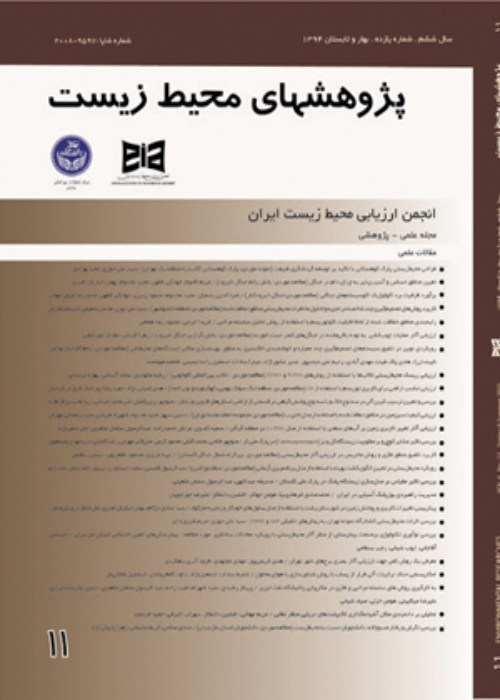Spatial Analysis of PM2.5 Pollutants and its Statistical Correlation with Meteorological Parameters in Tehran
Article Type:
Research/Original Article (دارای رتبه معتبر)
Abstract:
The objective of this study is the surveying spatial analysis of PM2.5 pollutants condition and the effects of atmospheric factors on it in the metropolis of Tehran. For this, the daily PM2.5 data measured by the controlling air quality and atmospheric parameters measured by Meteorological Organization in Tehran was used. The meteorological parameters used in this study include: temperature (minimum, average and maximum), relative humidity (minimum, average and maximum), wind speed (average and maximum), dew point and atmospheric pressure respectively. To study the spatial concentration of PM2.5, inverse distance weighting interpolation method was used. Inverse distance weighting model results show that in regions 7, 10, 20 and 21 have the highest concentration. Daily average PM2.5 concentrations during the study period showed that the highest concentrations at 18 June and the lowest was in the third April. It also shows the monthly average in January was the highest concentrations, while the lowest concentration is assigned to April. Seasonal Concentration shows the highest concentration of PM2.5 in winter season. Then, the statistical correlation between PM2.5 and atmospheric parameters examined. For this purpose, Pearson correlation and multiple linear regression methods were used. Pearson correlation coefficient analysis shows that, PM2.5 has a direct correlation with air pressure and dew point, While a negative correlation with rainfall and wind speed. The relationship between PM2.5 as the dependent variable and atmospheric parameters as independent variables were investigated by linear regression models (Enter and Stepwise). The correlation coefficient in the equation Enter and Stepwise is 0.427 and 0.346 respectively. Which represents the ability of both models to predict the amount of PM2.5. Test Results of Mean Square Error, shows, Stepwise model to predict PM2.5, is more suitable than other methods.
Keywords:
Language:
Persian
Published:
Environmental Researches, Volume:9 Issue: 18, 2019
Pages:
143 to 156
magiran.com/p1993801
دانلود و مطالعه متن این مقاله با یکی از روشهای زیر امکان پذیر است:
اشتراک شخصی
با عضویت و پرداخت آنلاین حق اشتراک یکساله به مبلغ 1,390,000ريال میتوانید 70 عنوان مطلب دانلود کنید!
اشتراک سازمانی
به کتابخانه دانشگاه یا محل کار خود پیشنهاد کنید تا اشتراک سازمانی این پایگاه را برای دسترسی نامحدود همه کاربران به متن مطالب تهیه نمایند!
توجه!
- حق عضویت دریافتی صرف حمایت از نشریات عضو و نگهداری، تکمیل و توسعه مگیران میشود.
- پرداخت حق اشتراک و دانلود مقالات اجازه بازنشر آن در سایر رسانههای چاپی و دیجیتال را به کاربر نمیدهد.
دسترسی سراسری کاربران دانشگاه پیام نور!
اعضای هیئت علمی و دانشجویان دانشگاه پیام نور در سراسر کشور، در صورت ثبت نام با ایمیل دانشگاهی، تا پایان فروردین ماه 1403 به مقالات سایت دسترسی خواهند داشت!
In order to view content subscription is required
Personal subscription
Subscribe magiran.com for 70 € euros via PayPal and download 70 articles during a year.
Organization subscription
Please contact us to subscribe your university or library for unlimited access!


